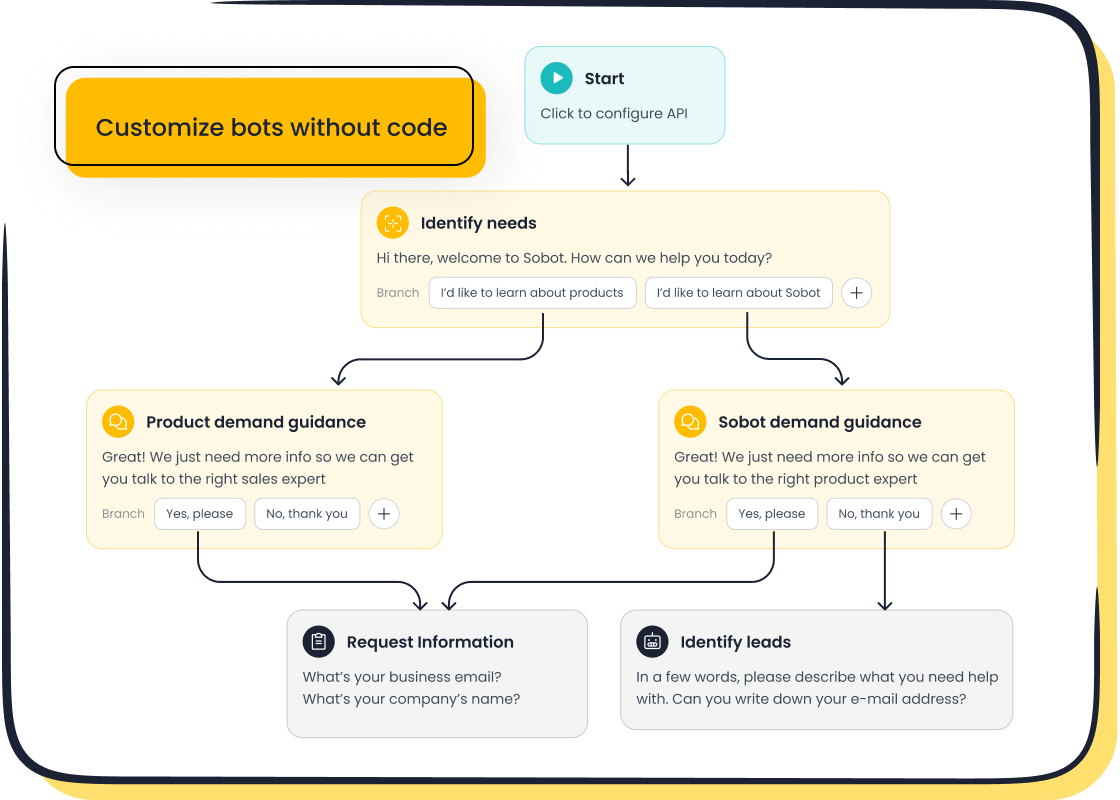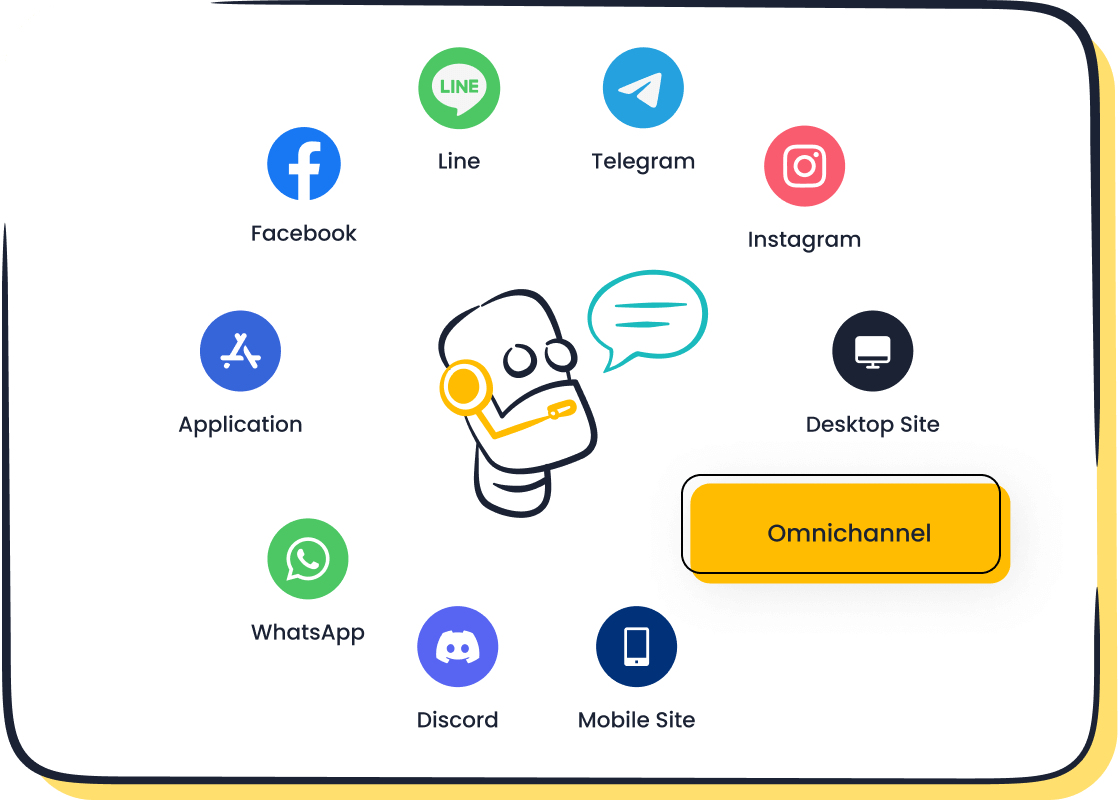What is customer self-service and why it matters

Customer self-service allows you to solve problems or find information without waiting for assistance. It empowers you to take control of your experience, offering tools like chatbots, FAQs, and self-service portals. This approach has become essential in today’s fast-paced world, where speed and convenience matter most. Studies reveal that 81% of customers prefer self-service over traditional support, as shown in the table below:
| Source | Percentage of Customers Preferring Self-Service |
|---|---|
| Zendesk | 67% |
| Harvard | 81% |
| American Express | 60% |
Brands like Sobot enhance this experience with AI-powered solutions, ensuring efficiency and satisfaction. By adopting self-service customer tools, businesses meet your expectations for instant and seamless support.
Understanding customer self-service
What is customer self-service?
Customer self-service refers to tools and systems that allow you to independently resolve issues, find information, or complete tasks without needing direct assistance from a support agent. These tools empower you to take control of your experience, offering convenience and efficiency.
Key features of customer self-service

Effective customer self-service systems share several key features. They provide round-the-clock accessibility, ensuring you can find solutions anytime, anywhere. They also offer user-friendly interfaces, making it easy for you to navigate and find what you need. Advanced systems integrate artificial intelligence to deliver personalized and accurate responses. For example, Sobot’s AI-powered chatbot uses a knowledge base to provide instant replies, helping you resolve queries quickly. Other essential components include:
- Knowledge bases with detailed help documentation.
- Interactive workflows that guide you step-by-step.
- Mobile apps and community forums for added flexibility.
These features ensure you can access information and resolve issues seamlessly, enhancing your overall experience.
Examples of self-service customer tools

You encounter self-service tools in many forms. Knowledge bases and FAQ pages are common examples, offering answers to frequently asked questions. Chatbots, like Sobot’s AI Chatbot, provide instant, multilingual support across platforms such as WhatsApp and SMS. Video tutorials and interactive workflows guide you through complex processes. Ticketing systems and order trackers help you monitor progress without needing to contact support. These tools make self-service customer solutions versatile and effective.
How customer self-service differs from traditional support
Proactive vs. reactive support
Traditional support often relies on reactive methods, where you reach out to resolve an issue after it occurs. In contrast, customer self-service takes a proactive approach. It anticipates your needs and provides solutions before problems arise. For instance, a chatbot can suggest relevant articles or FAQs based on your browsing behavior, saving you time. Proactive support reduces friction and enhances your experience by addressing potential issues early.
| Approach | Definition | Characteristics |
|---|---|---|
| Proactive | Anticipates and addresses customer needs before they become issues. | Involves reaching out to customers with solutions, preventing complaints before they arise. |
| Reactive | Responds to customer inquiries and complaints as they arise. | Focuses on resolving individual issues as they come in, typical in traditional call centers. |
Scalability and efficiency in self-service

Customer self-service scales effortlessly compared to traditional support. Self-service tools handle high volumes of inquiries without increasing costs. For example, Sobot’s AI Chatbot operates 24/7, managing repetitive queries autonomously. This reduces the need for large support teams and ensures faster resolution times. Self-service also eliminates the need to wait for business hours, giving you the flexibility to resolve issues at your convenience. Businesses benefit from improved efficiency, while you enjoy a smoother, more responsive experience.
Why customer self-service is essential for modern businesses
Meeting customer expectations in a digital-first world
The demand for instant and autonomous solutions
In today’s fast-paced digital world, customers expect instant solutions. You want to resolve issues quickly without waiting for assistance. Self-service customer tools meet this demand by offering 24/7 accessibility. Whether it’s a chatbot answering your questions or a knowledge base providing detailed guides, these tools empower you to find answers on your own. For example, Sobot’s AI Chatbot operates round-the-clock, handling repetitive queries autonomously. This ensures faster resolutions and enhances your satisfaction. Businesses that adopt self-service solutions not only save time but also build stronger customer relationships by valuing your need for autonomy.
The role of technology in shaping customer behavior
Technology has transformed how you interact with businesses. It enables seamless omnichannel support, allowing you to switch between platforms without repeating yourself. You now expect personalized experiences tailored to your preferences. Self-service technology, like Sobot’s multilingual chatbot, caters to these expectations by providing accurate and customized responses. Additionally, tools like mobile apps and community forums make it easier for you to access information anytime. This evolution in technology reflects your desire for convenience and efficiency, making customer self-service an integral part of modern business strategies.
Staying competitive with customer self-service
Enhancing brand perception through self-service
Offering self-service options improves how you perceive a brand. When businesses provide user-friendly tools, you feel valued and empowered. This leads to higher satisfaction and loyalty. Self-service also demonstrates a company’s commitment to innovation and efficiency. For instance, Sobot’s solutions integrate AI and automation to deliver seamless support, enhancing your overall customer experience. Brands that prioritize self-service stand out in competitive markets by meeting your expectations for convenience and autonomy.
Case study: How OPPO leveraged Sobot's Chatbot for success
OPPO, a global leader in smart devices, faced challenges during peak shopping periods. By implementing Sobot’s AI Chatbot, OPPO resolved 83% of customer queries autonomously. This reduced agent workload and improved response times. The chatbot’s efficiency contributed to a 94% positive feedback rate and a 57% increase in repurchase rates. Additionally, Sobot optimized OPPO’s knowledge base, cutting maintenance efforts by 90%. This success highlights how self-service tools can enhance satisfaction and drive business growth. OPPO’s story demonstrates the transformative impact of customer self-service on modern businesses.
Common self-service customer channels
AI-powered chatbots and virtual assistants
How Sobot's Chatbot enhances self-service efficiency
AI-powered chatbots have revolutionized customer self-service by providing instant, accurate responses. Sobot’s AI Chatbot takes this efficiency to the next level. It integrates data from systems like CRM to deliver personalized answers. For instance, if you inquire about a return policy for a recent purchase, the chatbot tailors its response based on your membership status and purchase history. This personalization ensures you receive relevant information quickly. Additionally, Sobot’s chatbot engages in two-way dialogue, understanding your intent and context to provide precise solutions. By automating repetitive queries, it improves productivity by 70% and reduces costs by up to 50%.
Benefits of 24/7 availability and multilingual support
Self-service tools like Sobot’s chatbot operate round-the-clock, ensuring you can resolve issues anytime. This 24/7 availability eliminates the frustration of waiting for business hours. A survey revealed that 73% of customers prefer websites for problem resolution, highlighting the importance of constant accessibility. Sobot’s chatbot also supports multiple languages, allowing you to interact in your preferred language. This feature enhances satisfaction by making self-service inclusive and efficient, regardless of your location or language.
Knowledge bases and FAQs
Building a comprehensive and user-friendly knowledge base
A well-structured knowledge base empowers you to find answers independently. To create one, businesses define objectives and understand user needs. Sobot helps companies organize content logically with categories and tags, ensuring easy navigation. Visuals like images and videos make information engaging, while AI-powered search tools provide precise results. Feedback and analytics further refine the content, keeping it relevant and effective.
Ensuring easy navigation for customers
Easy navigation is crucial for a successful knowledge base. Businesses organize content into clear categories with descriptive headings. Sobot enhances this experience by using intuitive structures and relevant tags. For example, a search bar allows you to retrieve information quickly. Consistent URLs and keyword alignment ensure you find what you need without hassle, improving your overall satisfaction.
Mobile apps and self-service portals
Features that improve user experience
Mobile apps and customer portals simplify self-service by offering features like real-time data flow and personalized experiences. Sobot’s tools streamline processes such as registration and payments, reducing wait times. Multilingual interfaces and contactless check-ins enhance convenience. These features ensure a seamless journey, making self-service faster and more satisfying.
Integrating self-service tools with existing systems
Integrating self-service portals with business systems like CRM ensures seamless operations. Sobot’s solutions connect with existing platforms, eliminating data silos. This integration allows you to manage accounts, track orders, and access support effortlessly. Whether through a custom-built portal or an existing platform, Sobot ensures smooth functionality, enhancing your experience.
Benefits of customer self-service for businesses
Improved customer satisfaction

Faster resolution times with tools like Sobot's Chatbot
You expect quick solutions when facing issues. Customer self-service tools like Sobot's AI Chatbot deliver faster resolutions by automating responses to common queries. This eliminates the need for lengthy phone calls or email exchanges. For example, the chatbot operates 24/7, ensuring you can resolve issues anytime. Businesses that implement self-service solutions often see a 45% increase in customer satisfaction. By providing instant answers, these tools enhance your experience and build loyalty.
Empowering customers with autonomy
Self-service empowers you to take control of your experience. Tools like knowledge bases and customer portals allow you to find answers independently. This autonomy makes you feel valued and reduces frustration. When you can resolve issues without waiting for support, your satisfaction increases. Businesses benefit too, as empowered customers are more likely to remain loyal and recommend their services.
Cost savings and operational efficiency
Reducing the need for large support teams
Self-service reduces the demand for live agents, leading to lower costs. Automating repetitive tasks eliminates the need to hire additional staff, saving up to 30% on labor expenses. For example, Sobot's Chatbot handles high volumes of inquiries, allowing businesses to allocate resources more effectively. This approach not only lowers costs but also improves operational efficiency.
Automating repetitive tasks with AI solutions
AI-powered tools like Sobot's Chatbot streamline operations by automating routine tasks. These tools manage multiple conversations simultaneously, reducing bottlenecks and improving response times. Automation also enhances engagement by providing quick, personalized interactions. Businesses achieve increased efficiency while you enjoy a seamless experience.
Scalability and adaptability
Handling high inquiry volumes seamlessly
Self-service technology enables businesses to manage large volumes of inquiries without additional overhead. Tools like chatbots handle multiple interactions at once, ensuring you receive timely support. This scalability allows businesses to grow while maintaining high service standards.
Supporting business growth without increasing costs
Scaling customer support often requires significant investment. Self-service solutions eliminate this challenge by automating processes and reducing the need for additional staff. For example, Sobot's Chatbot supports business growth by handling inquiries efficiently, ensuring you receive consistent support as the company expands. This approach keeps costs low while maintaining quality.
How to implement or optimize a customer self-service strategy
Assessing your business needs
Identifying common customer pain points
Understanding your customers’ challenges is the first step in creating an effective self-service strategy. Analyze support tickets to identify recurring issues. Monitor user behavior on your website to uncover patterns in search queries. For example, if customers frequently ask about return policies, you can prioritize adding this information to your knowledge base. Surveys and feedback forms also reveal pain points, helping you refine your approach. By addressing these challenges, you ensure your self-service tools meet customer expectations.
Choosing the right self-service tools like Sobot's Chatbot

Selecting the right tools is crucial for success. Consider factors like cost, scalability, and functionality. Tools like Sobot's AI Chatbot offer 24/7 availability and multilingual support, making them ideal for businesses of all sizes. The chatbot automates repetitive tasks, reducing costs by up to 50%. Its intuitive interface ensures ease of use, while its integration with platforms like WhatsApp enhances accessibility. Choosing tools that align with your goals ensures a seamless experience for your customers.
Best practices for implementation
Ensuring a user-friendly interface
A user-friendly interface makes self-service tools more effective. Design your platform with clear navigation and simple language. For example, Sobot’s chatbot uses a point-and-click interface, allowing users to interact effortlessly. Minimize distractions and ensure mobile optimization to enhance usability. A well-designed interface improves engagement and satisfaction, encouraging customers to rely on self-service options.
Regularly updating and maintaining self-service content
Keeping your content accurate and relevant is essential. Regularly review FAQs, knowledge bases, and chatbot responses to reflect policy changes or new trends. Use analytics to identify outdated or underperforming content. For instance, Sobot helps businesses automate updates to their knowledge base, reducing manual effort by 90%. Routine updates ensure your self-service tools remain reliable and effective.
Measuring success and continuous improvement
Tracking key performance metrics
Measuring the success of your self-service strategy involves tracking metrics like reduced wait times, increased customer satisfaction, and higher revenue. For example, Sobot’s chatbot improves resolution times by 70%, directly impacting satisfaction levels. Monitoring these metrics helps you evaluate the effectiveness of your tools and identify areas for improvement.
Gathering customer feedback for optimization
Customer feedback is invaluable for refining your self-service tools. Use surveys and direct feedback channels to uncover confusing interfaces or missing information. Combine this feedback with data from web traffic and search patterns to enhance your platform. For instance, if users struggle to find specific FAQs, reorganizing your knowledge base can improve navigation. Continuous optimization ensures your self-service tools evolve with customer needs.
How Sobot can support your self-service strategy
Overview of Sobot's self-service solutions

Sobot offers a comprehensive suite of self-service tools designed to enhance your customer experience. These solutions empower you to resolve issues independently while improving business efficiency. The Sobot AI Chatbot stands out as a key tool in this strategy. It operates 24/7, providing instant responses to your queries. Its multilingual capabilities ensure you receive support in your preferred language, making it inclusive and user-friendly.
The chatbot integrates seamlessly with platforms like WhatsApp and SMS, offering omnichannel support. It uses AI to deliver personalized answers based on your behavior and preferences. For example, if you inquire about a product return, the chatbot tailors its response to your purchase history. This level of customization ensures you get accurate and relevant information.
Sobot also provides tools like knowledge bases and self-service portals. These resources allow you to access detailed guides, FAQs, and account management features. Businesses benefit from reduced operational costs, while you enjoy faster resolutions and greater autonomy. With Sobot, self-service becomes a seamless and efficient experience.
Success stories of businesses using Sobot
Many businesses have achieved remarkable results by implementing Sobot's self-service solutions. A notable example is OPPO, a global leader in smart devices. During peak shopping periods, OPPO faced a surge in customer inquiries. By deploying Sobot's AI Chatbot, OPPO resolved 83% of queries autonomously. This reduced agent workload and improved response times.
Sobot also helped OPPO optimize its knowledge base, cutting maintenance efforts by 90%. These improvements led to a 94% positive feedback rate and a 57% increase in repurchase rates. OPPO’s success demonstrates how Sobot’s tools can transform your customer service strategy.
If you want to explore how Sobot can enhance your self-service capabilities, visit Sobot's website for more information.
Customer self-service has become a cornerstone of modern business strategies. It empowers you to resolve issues independently, offering convenience through 24/7 accessibility. Businesses benefit from reduced costs, improved efficiency, and scalable solutions. For example, self-service tools like Sobot’s AI Chatbot automate repetitive tasks, saving time and enhancing your experience.
By adopting self-service, businesses meet your expectations for instant support while fostering loyalty. Sobot’s all-in-one platform integrates AI and automation to deliver seamless, personalized assistance. With features like real-time monitoring and multilingual support, Sobot ensures high satisfaction rates. Explore Sobot’s solutions to optimize your self-service strategy and elevate your customer experience.
FAQ
What is the purpose of a customer self-service system?
A customer self-service system allows you to resolve issues independently. It provides tools like chatbots, knowledge bases, and self-service portals. These tools save time by offering instant solutions, improving your experience while reducing the need for live support.
How does a chatbot improve customer service?
A chatbot automates responses to common queries. For example, Sobot’s AI Chatbot operates 24/7, providing instant, multilingual support. It reduces wait times and enhances efficiency by handling repetitive tasks, allowing human agents to focus on complex issues.
Why is a knowledge base important for self-service?
A knowledge base organizes information into categories, making it easy for you to find answers. It includes FAQs, guides, and tutorials. Businesses like Sobot use AI to optimize knowledge bases, ensuring accurate and up-to-date content for better customer experiences.
How can you measure the success of a self-service strategy?
You can track metrics like reduced wait times, increased customer satisfaction, and higher resolution rates. For instance, Sobot’s chatbot improves resolution times by 70%, directly impacting satisfaction levels and ensuring your needs are met efficiently.
What makes a good FAQ page?
A good FAQ page answers common questions clearly and concisely. It uses simple language and organizes content logically. Businesses like Sobot enhance FAQ pages with AI-powered search tools, ensuring you find relevant answers quickly and easily.
See Also
Transforming Support With AI Customer Service Agents
Enhancing Efficiency Through AI Customer Service Solutions
Ten Strategies to Improve Live Chat Satisfaction